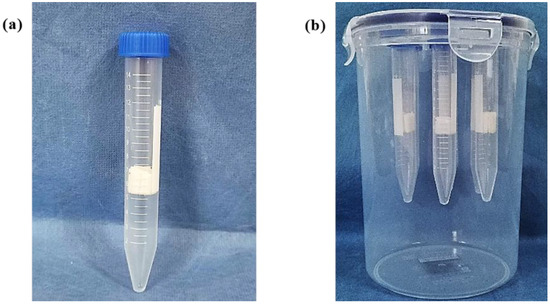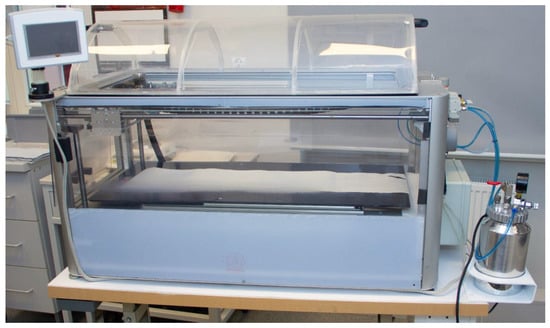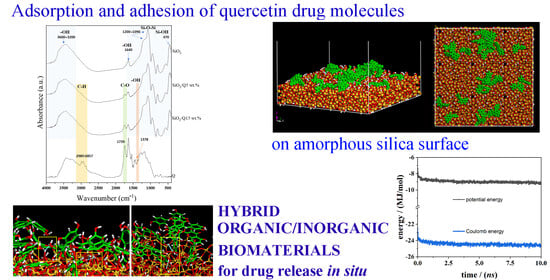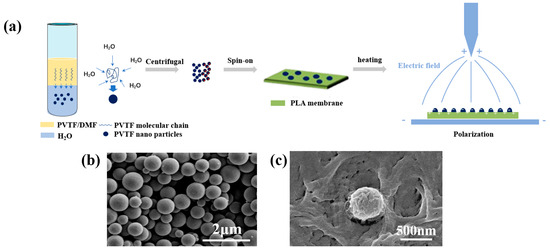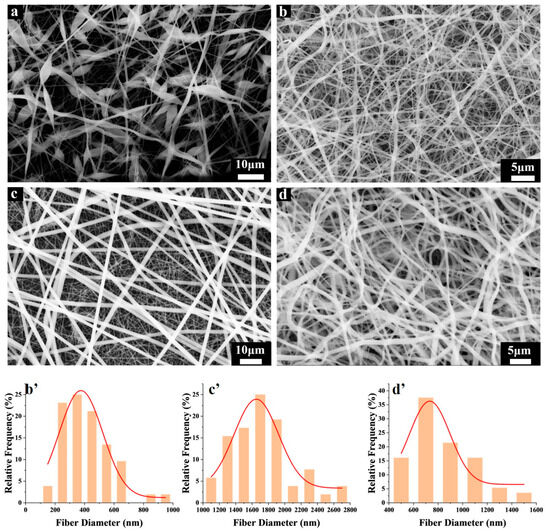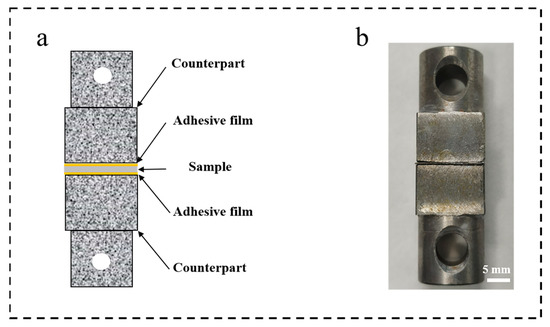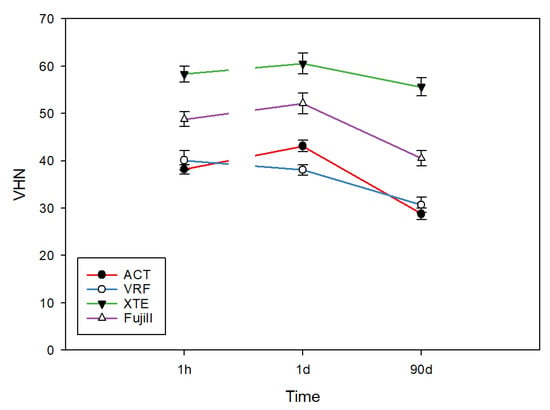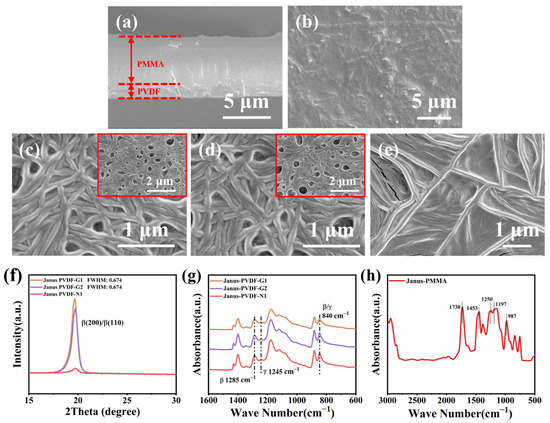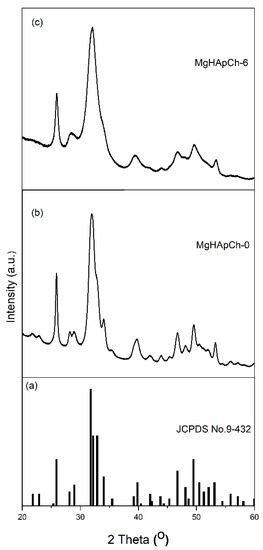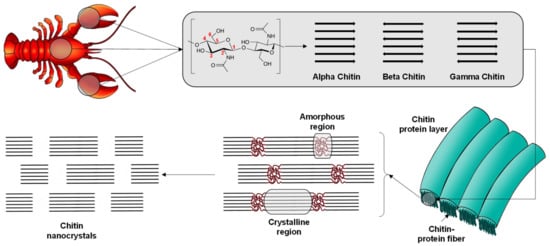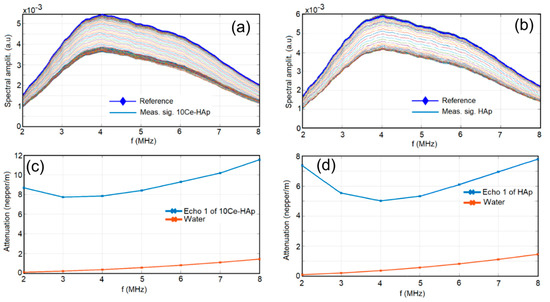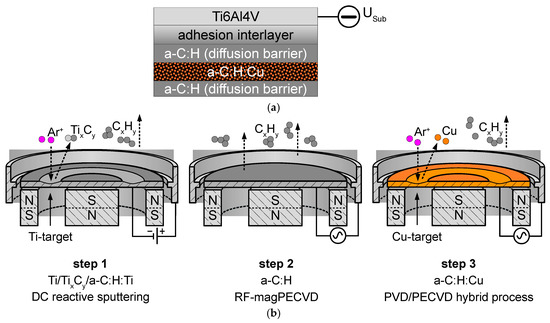Feature Paper Collection in Bioactive Coatings and Biointerfaces
Share This Topical Collection
Editor
 Dr. Alexandra Muñoz-Bonilla
Dr. Alexandra Muñoz-Bonilla
 Dr. Alexandra Muñoz-Bonilla
Dr. Alexandra Muñoz-Bonilla
E-Mail
Website
Collection Editor
Institute of Polymer Science and Technology (ICTP-CSIC), 28006 Madrid, Spain
Interests: polymer coatings; antimicrobial coatings; biointerfaces; porous surfaces; functional surfaces superhydrophobicity; bioapplications
Special Issues, Collections and Topics in MDPI journals
Topical Collection Information
Dear Colleagues,
I am excited to announce a Special Feature Paper Collection for this section. I would like to invite leading experts in the field to contribute high-quality papers to this collection. This Feature Paper Collection aims at presenting novel approaches, improvements or new cutting-edge developments in the field.
The particular areas of interest for this Special Issue include but are not limited to:
- Cell–material interactions;
- Bioinspired surface and interfaces;
- Advances in bioactive surfaces characterization;
- Applications of Bioactive coatings;
- Antimicrobial coatings, prevention, and control of biofilms.
Feature articles and reviews from top experts are welcome. We are happy to offer discount of 600 CHF on the APCs for any article published, with additional discounts available if the contribution is a review that might be of great interest in this field. The criteria mainly include the academic background of the scholar, the publication record, the novelty and significance of content, and the peer-review result of the paper.
In addition, if 10 or more papers are published in this collection, we will make a collection book, and the leading authors of each article will receive a hard copy of this book.
Dr. Alexandra Muñoz-Bonilla
Collection Editor
Manuscript Submission Information
Manuscripts should be submitted online at www.mdpi.com by registering and logging in to this website. Once you are registered, click here to go to the submission form. Manuscripts can be submitted until the deadline. All submissions that pass pre-check are peer-reviewed. Accepted papers will be published continuously in the journal (as soon as accepted) and will be listed together on the collection website. Research articles, review articles as well as short communications are invited. For planned papers, a title and short abstract (about 100 words) can be sent to the Editorial Office for announcement on this website.
Submitted manuscripts should not have been published previously, nor be under consideration for publication elsewhere (except conference proceedings papers). All manuscripts are thoroughly refereed through a single-blind peer-review process. A guide for authors and other relevant information for submission of manuscripts is available on the Instructions for Authors page. Coatings is an international peer-reviewed open access monthly journal published by MDPI.
Please visit the Instructions for Authors page before submitting a manuscript.
The Article Processing Charge (APC) for publication in this open access journal is 2600 CHF (Swiss Francs).
Submitted papers should be well formatted and use good English. Authors may use MDPI's
English editing service prior to publication or during author revisions.
Published Papers (15 papers)
Open AccessArticle
Direct Jet Co-Electrospinning of Spinal Cord-Mimicking Phantom for Diffusion Magnetic Resonance Imaging
by
Qi Li, Longji Xu, Chunyan Hu, Ziwei Zhang, Daxiang Yang, Weibo Chen, Gareth Williams, Geoff J. M. Parker, Fei Gao and Feng-Lei Zhou
Viewed by 986
Abstract
(1) Background: Spinal cord injuries and diseases necessitate sophisticated tools for accurate diagnosis and treatment planning. However, the lack of reliable phantoms mimicking the complex structure of the spinal cord hinders the development and validation of advanced imaging techniques. This study aims to
[...] Read more.
(1) Background: Spinal cord injuries and diseases necessitate sophisticated tools for accurate diagnosis and treatment planning. However, the lack of reliable phantoms mimicking the complex structure of the spinal cord hinders the development and validation of advanced imaging techniques. This study aims to address this critical unmet need by exploring the application of electrospinning to create polymeric fibers resembling the human spinal cord; (2) Methods: Direct jet coaxial electrospinning (DJ-co-ES) is a specialized electrospinning process characterized by the presence of solely the straight segment of a fluid jet. The research firstly investigates the effects of various solution properties and process parameters on the formation and characteristics of core/shell fibers with polycaprolactone (PCL) as the shell and polyethylene oxide (PEO) as the core. Furthermore, the study explores the potential of these DJ-co-ES fibers as phantoms by measuring various diffusion MRI parameters; (3) Results: Scanning electron microscopy (SEM) revealed the successful production of hollow PCL microfibers (2–12 μm diameter) with smooth, cylindrical morphology and high orientation. The DJ-co-ES process demonstrated optimal stability when utilizing 10
w/
v% PCL in DCM/DMF for the shell and 4
w/
v% PEO in deionized water for the core. Additionally, the high miscibility between core and shell solvents in other core and shell solutions cases facilitated the production of fibers with smaller diameters. The findings demonstrate that the measured values fall within the range observed in both healthy and diseased spinal cord tissues; (4) Conclusions: This research paves the way for utilizing DJ-co-ES technology to develop reliable phantoms for spinal cord applications, ultimately fostering advancements in diagnosis, treatment, and research related to spinal cord conditions.
Full article
►▼
Show Figures
Open AccessArticle
Cinnamon Bark Oil as an Effective Fungicide in Protecting the Surface of Wood-Based Softboards against the Development of Mold Fungi
by
Izabela Betlej, Bogusław Andres, Krzysztof Krajewski, Piotr Borysiuk, Jerzy Szakiel, Mateusz Kowalski, Renata Salerno-Kochan, Maciej Balawejder, Tomasz Cebulak, Radosław Auriga and Katarzyna Rybak
Viewed by 1581
Abstract
Porous wood-based boards, like any lignocellulosic material, are susceptible to biocorrosion caused by mold fungi. Their durability can be extended by using biocides. Due to the fact that porous boards are considered an ecological material, it would be beneficial to also use natural
[...] Read more.
Porous wood-based boards, like any lignocellulosic material, are susceptible to biocorrosion caused by mold fungi. Their durability can be extended by using biocides. Due to the fact that porous boards are considered an ecological material, it would be beneficial to also use natural agents to protect them. For this purpose, the surface of softboards was protected with a 30% solution of cinnamon bark oil in ethanol. Three application levels were used: 75 g/m
2, 120 g/m
2, and 200 g/m
2 of solution. It has been shown that the cinnamon bark oil solution used at an application rate of 200 g/m
2 is an effective fungicide, protecting softboards (SBs) against the development of mold fungi:
T. viride and
C. globosum. The dominant volatile component of cinnamon oil identified in the boards turned out to be cinnamaldehyde. Three months after treatment, this substance constituted 74% of the volatile components. The proposed treatment method allows for short-term preventive protection of boards against mold fungi.
Full article
►▼
Show Figures
Open AccessCommunication
Borneol-Modified Chitosan Coating with Antibacterial Properties via Layer-by-Layer Strategy
by
Zixu Xie, Zhiran Zheng, Chen Chen, Guofeng Li and Xing Wang
Cited by 1 | Viewed by 1045
Abstract
Chitosan exhibits remarkable broad-spectrum antibacterial activity, especially in acidic environments. However, its poor solubility in water and significantly decreased antibacterial performance after membrane formation greatly limit its extensive application. To address this issue, glycol chitosan-4-pyridylcarboxaldehydeborneol (GCBP) was synthesized by conjugating glycol chitosan (GC)
[...] Read more.
Chitosan exhibits remarkable broad-spectrum antibacterial activity, especially in acidic environments. However, its poor solubility in water and significantly decreased antibacterial performance after membrane formation greatly limit its extensive application. To address this issue, glycol chitosan-4-pyridylcarboxaldehydeborneol (GCBP) was synthesized by conjugating glycol chitosan (GC) with 4-pyridylcarboxaldehydeborneol ester (BP) through dynamic Schiff base bonds utilizing a layer-by-layer self-assembly strategy. When bacteria come into contact with the surface, the local acidic microenvironment triggers the cleavage of the Schiff base, resulting in the release of bactericidal BP and GC for combined sterilization. In vitro results demonstrated that the antibacterial properties of GCBP were positively related to the modification layers. The excellent antibacterial performance of the GCBP modification demonstrates not only great potential for clinical urinary catheters but also for broad antibacterial applications in the medical field.
Full article
►▼
Show Figures
Open AccessArticle
Hybrid Organic–Inorganic Biomaterials as Drug Delivery Systems: A Molecular Dynamics Study of Quercetin Adsorption on Amorphous Silica Surfaces
by
Giuseppina Raffaini, Pasqualina Pirozzi, Michelina Catauro and Antonio D’Angelo
Cited by 2 | Viewed by 1854
Abstract
Many important drugs in pharmaceutical applications are poorly soluble. Solubilization, which is diffusion through biological barriers, and the control of local administration are crucial steps for bioavailability and to avoid cytotoxic effects. Hybrid organic/inorganic biomaterials can incorporate drugs for in situ release after
[...] Read more.
Many important drugs in pharmaceutical applications are poorly soluble. Solubilization, which is diffusion through biological barriers, and the control of local administration are crucial steps for bioavailability and to avoid cytotoxic effects. Hybrid organic/inorganic biomaterials can incorporate drugs for in situ release after implantation. Molecular Mechanics (MM) and Molecular Dynamics (MD) simulations are useful tools for investigating intermolecular interactions between drug and biomaterial surfaces at the atomistic level for these applications. This work studies quercetin, a flavonoid drug important for its anti-inflammatory, antioxidant, and anticancer properties, and the amorphous SiO
2 surface using a simulation protocol proposed in previous work related to ketoprofen drugs. After adsorption on the amorphous silica surface, the adsorption process of quercetin drug molecules at two different drug concentrations near a hydrated and then dried silica surface is investigated. Interestingly, these theoretical results are compared with experimental data obtained via Fourier Transform Infrared Spectroscopy (FT–IR) spectra related to quercetin molecules homogenously entrapped in a silica matrix obtained via the Sol–Gel method. Favorable H– bonds and some π–π interactions among drug molecules are crucial surface interactions for the new generation of biocompatible materials capable of incorporating anti-inflammatory agents for release into the human body.
Full article
►▼
Show Figures
Open AccessArticle
PVTF Nanoparticles/PLA Electroactive Degradable Membrane for Bone Tissue Regeneration
by
Suzhan Shi, Xun Xu, Xuzhao He, Siyuan Fan, Pengruofeng Liu, Chengwei Wu and Kui Cheng
Cited by 1 | Viewed by 1525
Abstract
Electroactive biomaterials can influence the microenvironment between cells and a material’s surface by controlling surface electrical signals, thereby affecting cellular physiological activities. As the most commonly used ferroelectric polymer, Poly(vinylidene fluoride-trifluoroethylene) (PVTF) has attracted widespread attention due to its good stability, biocompatibility and
[...] Read more.
Electroactive biomaterials can influence the microenvironment between cells and a material’s surface by controlling surface electrical signals, thereby affecting cellular physiological activities. As the most commonly used ferroelectric polymer, Poly(vinylidene fluoride-trifluoroethylene) (PVTF) has attracted widespread attention due to its good stability, biocompatibility and mechanical properties. However, it has limitations such as non-degradability. In this study, PVTF nanoparticles (PVTF NPs), prepared using a phase separation method, were compounded with polylactide (PLA) to prepare PVTF NPs/PLA composite membrane (PN/PLA), which simultaneously achieved electroactivity and degradability. PVTF NPs containing ferroelectric β phase were evenly distributed on the PLA substrate, forming negative potential spots through corona polarization. The PLA substrate gradually degraded in a simulated body fluid environment. The negative surface potential provided by PVTF NPs in PN/PLA enhanced the adhesion, proliferation, and early-stage osteogenic differentiation of bone marrow mesenchymal stem cells (BMSCs). The electrical bioactivity and degradability could be joined together in this study, which is promising for tissue regeneration biomaterials, such as guided bone regeneration membrane.
Full article
►▼
Show Figures
Open AccessCommunication
Preparation and Antibacterial Properties of PLA-Based Composite Nanofiber Membrane Material Loaded with Cationic Antibacterial Agent by Electrospinning
by
Hongyu Gong, Lin Li, Na Li, Lina Tian, Tao Zhang, Lexin Zhang and Tifeng Jiao
Cited by 2 | Viewed by 1609
Abstract
With the continuous application of antibacterial materials, various problems have emerged, such as expensive prices and the potential development of resistance. Cationic antibacterial agents, due to their high solubility, reactivity, and antibacterial properties, are considered as environmentally friendly and cost-effective antibacterial agents. In
[...] Read more.
With the continuous application of antibacterial materials, various problems have emerged, such as expensive prices and the potential development of resistance. Cationic antibacterial agents, due to their high solubility, reactivity, and antibacterial properties, are considered as environmentally friendly and cost-effective antibacterial agents. In addition, the electrospinning technique is recognized as a versatile and high-efficiency method to produce nanofibers with multifunctional properties and adjustable structures. In this work, we prepared a series of nanofiber membranes by electrospinning technology using hexadecyl trimethyl ammonium Bromide (CTAB) and 5-Chloro-8-hydroxyquinoline (5-Cl8Q) as antibacterial agents and polylactic acid (PLA) as substrate. The antimicrobial performance of PLA/CTAB/5-Cl8Q was the highest among the prepared materials, which inhabited
S. aureus and
E. coli up to 99.9% and 95.9%, respectively, and the antibacterial properties were stable. In general, PLA/CTAB/5-Cl8Q has great development potential, and it can be applied to real life as a cost-effective, biodegradable and highly antibacterial material.
Full article
►▼
Show Figures
Open AccessArticle
Biocompatible PVTF Coatings on Ti with Improved Bonding Strength
by
Weiming Lin, Xuzhao He, Xiaowei Guo, Dengfeng Xu and Kui Cheng
Viewed by 1200
Abstract
In this work, a poly(vinylidenefluoride-co-trifluoroethylene) (PVTF) coating on a titanium (Ti) substrate was prepared, and Ti metal surfaces were treated by physical or chemical methods to achieve a high bonding strength with PVTF. Scanning electron microscopy (SEM), atomic force microscope (AFM), and static
[...] Read more.
In this work, a poly(vinylidenefluoride-co-trifluoroethylene) (PVTF) coating on a titanium (Ti) substrate was prepared, and Ti metal surfaces were treated by physical or chemical methods to achieve a high bonding strength with PVTF. Scanning electron microscopy (SEM), atomic force microscope (AFM), and static water contact angles (WCA) were used to characterize the Ti metal surfaces. Further, mechanical stretching testing was employed to measure the bonding strength of PVTF coatings. The possible mechanism for the improved bonding strength could be the higher OH concentrations on Ti metal surfaces, which could lead to the formation of chemical bonds with the F atom of PVTF chains. Finally, a CCK-8 analysis of bone marrow mesenchymal stem cells (BMSCs) cultured on the PVTF coatings confirmed that the physical and chemical treatments had no significant differences in biocompatibility. Such a PVTF coating on a Ti substrate showed the potential of biomedical metal implants.
Full article
►▼
Show Figures
Open AccessArticle
Mechanical Stability of Self-Adhesive/Ion-Releasing Resin Composites
by
Abdulrahman Alshabib, Abdullah Alshehri, Carlos A. Jurado, Ali Alrahlah, Abdulrahman Almazrou, Mansour Albuhayri, Abdullah Alnujaym, Abdullah Almuhanna, Nicholas G. Fischer and Hamad Algamaiah
Cited by 3 | Viewed by 2590
Abstract
The purpose of this study was to assess the effects of water storage on the surface microhardness (VHN) and fracture toughness (K
1C) of two self-adhesive restorative materials compared to traditional resin composite and resin-modified glass ionomer cement (RMGIC) restorative materials. Methods:
[...] Read more.
The purpose of this study was to assess the effects of water storage on the surface microhardness (VHN) and fracture toughness (K
1C) of two self-adhesive restorative materials compared to traditional resin composite and resin-modified glass ionomer cement (RMGIC) restorative materials. Methods: Two self-adhesive materials (Activa and Vertise Flow), a nonflowable composite (Filtek Z250), and an RMGIC (Fuji II) were evaluated. Hardness measurements (
n = 12) were recorded at three time intervals: (i) one-hour post-irradiation; (ii) after one day of storage in water at 37 °C; and (iii) after 90 days of storage in water at 37 °C. Fracture toughness (K
1C) measurements (
n = 12) were conducted after one day of storage in water at 37 °C and 90 days of storage in water at 37 °C. ANOVA and Tukey post hoc tests were used for statistical analysis. Results: Baseline VHN data were 38.2–58.3, decreasing significantly to 28.8–55.6 following 90 days of water storage. The Filtek Z250 had the highest VHN before and after storage, while the Activa had the lowest. K
IC values varied between 0.98–1.32 MPa·m
0.5. The highest value was for the Filtek Z250 while the Fuji II showed the lowest value (after both 1 and 90 days of storage in water). However, K
IC values decreased significantly after storage, except for the Fuji II. Conclusion: Self-adhesive/ion-releasing resin composites were negatively affected by water storage. Material reinforcements are possible future areas to explore.
Full article
►▼
Show Figures
Open AccessFeature PaperArticle
A Facile Synthesis of P(VDF-TrFE)-Coated-PMMA Janus Membranes for Guided Bone Regeneration
by
Qin Luo, Xuzhao He, Xiyue Duan, Haoqing Liu, Zhiyuan Zhou and Kui Cheng
Cited by 3 | Viewed by 1918
Abstract
Bone repair and regeneration have aroused widespread interest due to their potential usefulness in cases when bone self-healing is insufficient. In this work, a Poly(vinylidene fluoride-trifluoroethylene)-coated-Poly methyl methacrylate Janus membrane was prepared, where a P(VDF-TrFE) coating on a PMMA film serves as Janus-A
[...] Read more.
Bone repair and regeneration have aroused widespread interest due to their potential usefulness in cases when bone self-healing is insufficient. In this work, a Poly(vinylidene fluoride-trifluoroethylene)-coated-Poly methyl methacrylate Janus membrane was prepared, where a P(VDF-TrFE) coating on a PMMA film serves as Janus-A to mediate cell growth behavior, owing to its electroactivity, and the PMMA film serves as Janus-B to inhibit soft-tissue growth. A P(VDF-TrFE) coating separated from the substrate was put above the PMMA film before the PMMA film had dried completely, and a Janus membrane formed because of the flowability and adhesion of the nonvolatile PMMA solution. Their bonding could withstand the pressure of the body fluids in the shear direction. Various crystallization substrates were also applied to modulate the P(VDF-TrFE) coating’s surface potentials, as the surface potential would further affect cellular response. It was also found that the responses of the bone marrow mesenchymal stem cells (BMSCs) and bone marrow macrophages (BMDMs) could be adjusted through surface potential modification. Such a Janus membrane could potentially be applied to a biological environment with the effect of both guiding bone regeneration and preventing soft tissue adhesion.
Full article
►▼
Show Figures
Open AccessFeature PaperReview
Can Graphene Oxide Help to Prevent Peri-Implantitis in the Case of Metallic Implants?
by
Radu Nartita, Mihai Andrei, Daniela Ionita, Andreea Cristiana Didilescu and Ioana Demetrescu
Cited by 5 | Viewed by 2497
Abstract
This paper is a review focused on the capability of graphene oxide (GO) coatings in preventing peri-implantitis. Firstly, the paper establishes GO’s place in the frame of carbonic materials and its role as a composite material in dentistry in the prevention of bacterial
[...] Read more.
This paper is a review focused on the capability of graphene oxide (GO) coatings in preventing peri-implantitis. Firstly, the paper establishes GO’s place in the frame of carbonic materials and its role as a composite material in dentistry in the prevention of bacterial infections and in sustaining osseointegration. Secondly, the most relevant articles on GO as implant coatings and their associated shortcomings are presented and emphasizing is placed on the areas where more data is needed. The main chapters are devoted to the relationship between GO and biofilm formation on the implants and the surrounding periodontal tissue and we also attempt to evaluate GO’s efficacy in the case of peri-implantitis. Our findings strongly indicate that GO is a promising material for mitigating the problems mentioned, but some answers remain to be answered through rigorous research before declaring it a real success.
Full article
►▼
Show Figures
Open AccessArticle
Physicochemical and Biological Evaluation of Chitosan-Coated Magnesium-Doped Hydroxyapatite Composite Layers Obtained by Vacuum Deposition
by
Daniela Predoi, Carmen Steluta Ciobanu, Simona Liliana Iconaru, Steinar Raaen, Monica Luminita Badea and Krzysztof Rokosz
Cited by 18 | Viewed by 2337
Abstract
In the present work, the effectiveness of vacuum deposition technique for obtaining composite thin films based on chitosan-coated magnesium-doped hydroxyapatite Ca
10−xMg
x(PO
4)
6 (OH)
2 with x
Mg = 0.025 (MgHApCh) was proved for the first time. The
[...] Read more.
In the present work, the effectiveness of vacuum deposition technique for obtaining composite thin films based on chitosan-coated magnesium-doped hydroxyapatite Ca
10−xMg
x(PO
4)
6 (OH)
2 with x
Mg = 0.025 (MgHApCh) was proved for the first time. The prepared samples were exposed to three doses (0, 3, and 6 Gy) of gamma irradiation. The MgHApCh composite thin films nonirradiated and irradiated were evaluated by scanning electron microscopy (SEM), atomic force microscopy (AFM), and X-ray photoelectron spectroscopy (XPS) studies. The biological evaluation of the samples was also presented. All the results obtained from this study showed that the vacuum deposition method allowed for obtaining uniform and homogeneous layers. Fine cracks were observed on the MgHApCh composite thin films’ surface after exposure to a 6 Gy irradiation dose. Additionally, after gamma irradiation, a decrease in Ca, P, and Mg content was noticed. The MgHApCh composite thin films with doses of 0 and 3 Gy of gamma irradiation showed a cellular viability similar to that of the control. Samples with 6 Gy doses of gamma irradiation did not cause significantly higher fibroblast cell death than the control (
p > 0.05). On the other hand, the homogeneous distribution of pores that appeared on the surface of coatings after 6 Gy doses of gamma irradiation did not prevent the adhesion of fibroblast cells and their spread on the coatings. In conclusion, we could say that the thin films could be suitable both for use in bone implants and for other orthopedic and dentistry applications.
Full article
►▼
Show Figures
Open AccessReview
Chitin Nanocrystals: Environmentally Friendly Materials for the Development of Bioactive Films
by
Carolina Muñoz-Núñez, Marta Fernández-García and Alexandra Muñoz-Bonilla
Cited by 28 | Viewed by 6462
Abstract
Biobased nanomaterials have gained growing interest in recent years for the sustainable development of composite films and coatings, providing new opportunities and high-performance products. In particular, chitin and cellulose nanocrystals offer an attractive combination of properties, including a rod shape, dispersibility, outstanding surface
[...] Read more.
Biobased nanomaterials have gained growing interest in recent years for the sustainable development of composite films and coatings, providing new opportunities and high-performance products. In particular, chitin and cellulose nanocrystals offer an attractive combination of properties, including a rod shape, dispersibility, outstanding surface properties, and mechanical and barrier properties, which make these nanomaterials excellent candidates for sustainable reinforcing materials. Until now, most of the research has been focused on cellulose nanomaterials; however, in the last few years, chitin nanocrystals (ChNCs) have gained more interest, especially for biomedical applications. Due to their biological properties, such as high biocompatibility, biodegradability, and antibacterial and antioxidant properties, as well as their superior adhesive properties and promotion of cell proliferation, chitin nanocrystals have emerged as valuable components of composite biomaterials and bioactive materials. This review attempts to provide an overview of the use of chitin nanocrystals for the development of bioactive composite films in biomedical and packaging systems.
Full article
►▼
Show Figures
Open AccessFeature PaperArticle
Investigation of Spin Coating Cerium-Doped Hydroxyapatite Thin Films with Antifungal Properties
by
Simona Liliana Iconaru, Mihai Valentin Predoi, Patrick Chapon, Sofia Gaiaschi, Krzysztof Rokosz, Steinar Raaen, Mikael Motelica-Heino and Daniela Predoi
Cited by 28 | Viewed by 3548
Abstract
In this study, the cerium-doped hydroxyapatite (Ca
10−xCe
x(PO
4)
6(OH)
2 with
xCe = 0.1, 10Ce-HAp) coatings obtained by the spin coating method were presented for the first time. The stability of the 10Ce-HAp suspension particles
[...] Read more.
In this study, the cerium-doped hydroxyapatite (Ca
10−xCe
x(PO
4)
6(OH)
2 with
xCe = 0.1, 10Ce-HAp) coatings obtained by the spin coating method were presented for the first time. The stability of the 10Ce-HAp suspension particles used in the preparation of coatings was evaluated by ultrasonic studies, transmission electron microscopy (TEM), X-ray diffraction (XRD), and scanning electron microscopy (SEM). The surface morphology of the 10Ce-HAp coating was studied by SEM and atomic force microscopy (AFM) techniques. The obtained 10Ce-HAp coatings were uniform and without cracks or unevenness. Glow discharge optical emission spectroscopy (GDOES) and X-ray photoelectron spectroscopy (XPS) were used for the investigation of fine chemical depth profiling. The antifungal properties of the HAp and 10Ce-HAp suspensions and coatings were assessed using
Candida albicans ATCC 10231 (
C. albicans) fungal strain. The quantitative antifungal assays demonstrated that both 10Ce-HAp suspensions and coatings exhibited strong antifungal properties and that they successfully inhibited the development and adherence of
C. albicans fungal cells for all the tested time intervals. The scanning electron microscopy (SEM) and confocal laser scanning microscopy (CLSM) visualization of the
C. albicans fungal cells adherence to the 10Ce-HAp surface also demonstrated their strong inhibitory effects. In addition, the qualitative assays also suggested that the 10Ce-HAp coatings successfully stopped the biofilm formation.
Full article
►▼
Show Figures
Open AccessReview
A Comprehensive Review of Bioactive Glass Coatings: State of the Art, Challenges and Future Perspectives
by
Rachele Sergi, Devis Bellucci and Valeria Cannillo
Cited by 68 | Viewed by 8090
Abstract
Bioactive glasses are promising biomaterials for bone and tissue repair and reconstruction, as they were shown to bond to both hard and soft tissues stimulating cells towards a path of regeneration and self-repair. Unfortunately, due to their relatively poor mechanical properties, such as
[...] Read more.
Bioactive glasses are promising biomaterials for bone and tissue repair and reconstruction, as they were shown to bond to both hard and soft tissues stimulating cells towards a path of regeneration and self-repair. Unfortunately, due to their relatively poor mechanical properties, such as brittleness, low bending strength and fracture toughness, their applications are limited to non-load-bearing implants. However, bioactive glasses can be successfully applied as coatings on the surface of metallic implants to combine the appropriate mechanical properties of metal alloys to bioactivity and biocompatibility of bioactive glasses. In this review, several available coating techniques to coat metal alloys using bioactive glasses are described, with a special focus on thermal spraying, which nowadays is the most used to deposit coatings on metallic implants.
Full article
►▼
Show Figures
Open AccessArticle
Surface Characterization and Copper Release of a-C:H:Cu Coatings for Medical Applications
by
Stefan Nißen, Jan Heeg, Marion Wienecke, Detlef Behrend, Mareike Warkentin, Krzysztof Rokosz, Sofia Gaiaschi and Patrick Chapon
Cited by 8 | Viewed by 3826
Abstract
This paper focuses on the surface properties of a-C:H:Cu composite coatings for medical devices and how the release of Cu
2+ ions from such coatings can be controlled. The released Cu ions have the potential to act as a bactericidal agent and inhibit
[...] Read more.
This paper focuses on the surface properties of a-C:H:Cu composite coatings for medical devices and how the release of Cu
2+ ions from such coatings can be controlled. The released Cu ions have the potential to act as a bactericidal agent and inhibit bacterial colonization. A PVD–PECVD hybrid process was used to deposit a-C:H:Cu composite coatings onto Ti6Al4V substrates. We examine the layer surface properties using atomic force microscopy and static contact angle measurements. An increasing surface roughness and increasing contact angle of Ringer’s solution was measured with increasing copper mole fraction (
XCu) in the coatings. The contact angle decreased when a supplementary bias voltage of −50 V was used during the a-C:H:Cu deposition. These findings are in line with earlier published results regarding these types of coatings. The release of Cu
2+ ions from a-C:H:Cu coatings in Ringer’s solution was measured by anodic stripping voltammetry. Different layer structures were examined to control the time-resolved Cu release. It was found that the Cu release depends on the overall
XCu in the a-C:H:Cu coatings and that an additional a-C:H barrier layer on top of the a-C:H:Cu layer effectively delays the release of Cu ions.
Full article
►▼
Show Figures
Planned Papers
The below list represents only planned manuscripts. Some of these
manuscripts have not been received by the Editorial Office yet. Papers
submitted to MDPI journals are subject to peer-review.
Tentative Title: Chitin nanocrystals: environmentally friendly materials for the the development of bioactive films
Authors: Muñoz-Bonilla, A., et al.





